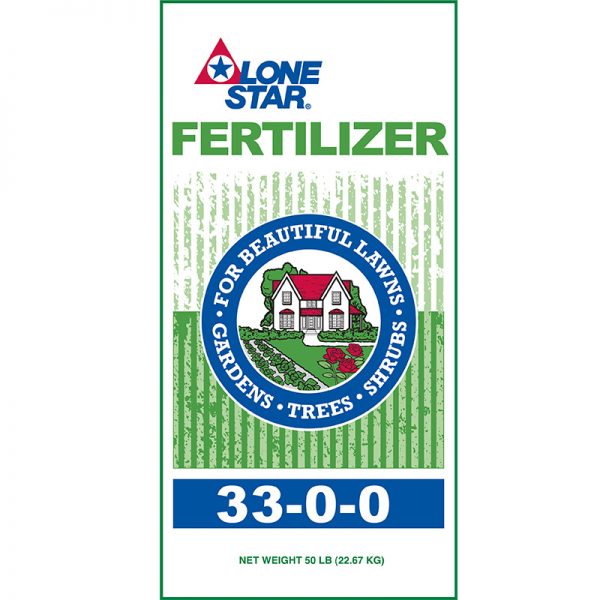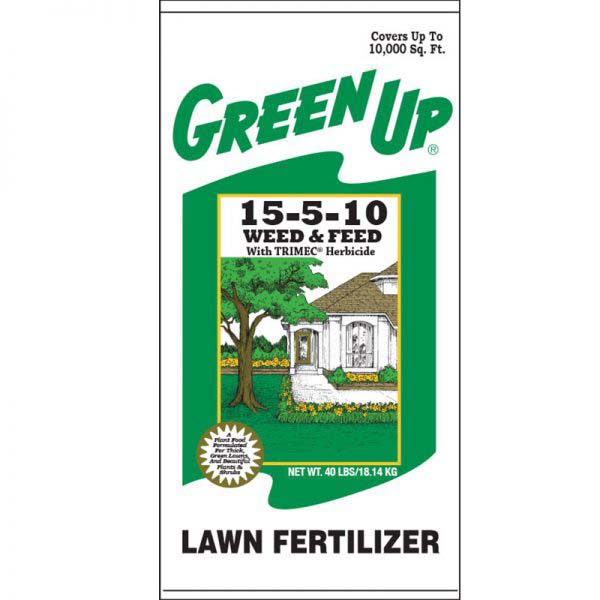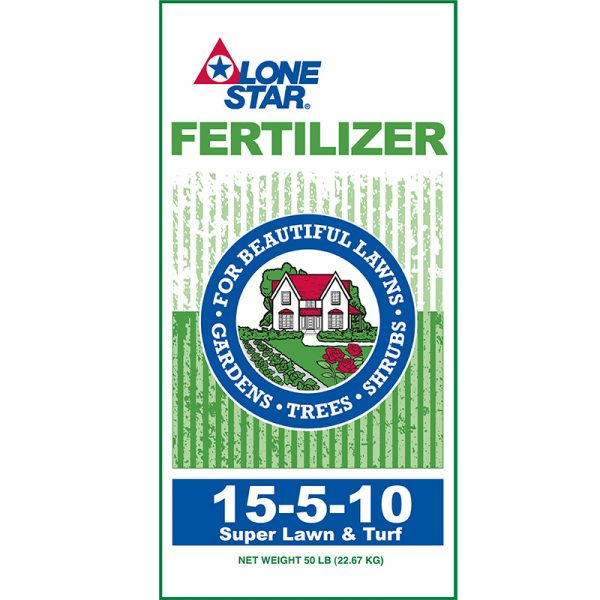Description
FEATURES
- Contains many of the nutrients and micronutrients needed to promote plant health and beauty
BENEFITS
- Forces new growth
- Encourages productivity
- Counteracts disease damage
- Counteracts old age
- Overrides weak competition
- Replaces nutrients lost by leaching, fixation, volitization, or clipping removal
NITROGEN (N) is the key element of nutrition in plant growth, especially turfgrass. A proper balance and adequate supply of other nutrients is important and must generally be maintained, but the amount of nitrogen should be adjusted for the desired growth response.
Variation in available nitrogen for plant use determines the greenness of the leaves, ability of the plant to recover from damage or stress, and the quantity of clippings the grass produces. Nitrogen affects grass color, root and shoot growth (density), resistance to disease, and cold, heat, and drought tolerance of the plant.
Nitrogen is a mobile element and easily leached to lover soil levels. When it is deficient, or lacking in the soil, the proteins of older leaves are converted to nitrogen which is then transported to the younger leaves. Older leaves then become light green, then yellow, and finally a coppery yellow before dying. When turfgrass tissue tests are made, the new leaves are used to determine the nutrient content of the plant.
The most sensitive and accurate measure of available nitrogen in the plant is obtained by a tissue test. In this test, plant tissue is sampled and analyzed either in a simply field test or in the laboratory. For turf, the quantity of clipping is the second most accurate measure of nitrogen availability. Changes in leaf color and density of turfgrass are less accurate. Indicators of nitrogen supply. Under most conditions a total of four pounds of nitrogen per 1000 sq. Ft. per year applied in four separate fertilizer applications is recommended for cold season grasses, where turf of lawn is irrigated or receives adequate rainfall. (That is a total annual rate per acre of 172 ponds of N.)
PHOSPHORUS (P) in fertilizers, phosphate (P2O5) has been labeled the workhorse of the nutrition team. It is taken into plants from a very dilute soil solution by ion exchange at the root surface. Phosphorus is present in every plant cell. It provides the plant with a mechanism for using and transforming energy.
A phosphorus deficiency most often is reflected in new plant parts. The phosphorus content in dry turfgrass tissue for instance, ranges from 0.15 to 0.55 percent P, with 0.3 to 0.4 percent as an average. Adequate levels of phosphorus promote rooting and improved root branching, while a deficiency results in a reduction in tillering (shoot or stalk growth) and moisture retention in the plant. When phosphorus is lacking, leaves become more narrow, and have a tendency to curl. Also, leaves become darker green, with some purple pigment evident, and they develop a wilted appearance. Deficiency of phosphorus in turfgrass becomes evident at the 0.08 percent level of phosphorus in a tissue test of leaf tissue, with normal growth exhibited at the 0.12 percent level. Phosphorus is not easily leached from soils, so less phosphorus may be needed to maintain high available levels. Often one pound of phosphorus per 1000 sq ft. of lawn area, applied in phosphate fertilizer, may be adequate for most turfgrasses. Other plants will vary in their requirements of this essential nutrient.
POTASSIUM (K) in fertilizers (K2O) is used by the plant in relatively large quantities. It is not a fixed constituent of living cells, but is essential in the growth and development process. Potassium favors the development (thickness) of cell walls, thus making the plant more resistant to heat, cold, and frost as well as to disease attack. It increases wear tolerance in turfgrass and encourages rooting. Also, in turfgrass, high potassium levels tend to reduce damage caused by dollar spot, fusarium blight, brownpatch, and red thread diseases.
Potassium’s role is that of a regulator of plant processes; it influences the performance of at least 46 enzymes, and control the uptake of some nutrients. Low oxygen supply in the root zone reduces the effectiveness of potassium because roots must have oxygen to utilize the nutrient elements.
Dry turfgrass tissue may have a range of 0.9 to 4.0 percent potassium, but 2-3 percent is normal. Potassium deficiencies are first indicated by drooping leaves, which feel soft to the touch. Death of the leaf tip is preceded by a reduction in foliate density. The leaves develop green and yellow blotches.
Potassium moves readily into the plant. When soil around peach trees, deficient in potassium, was fertilized, potassium content of the leaves doubled within two weeks. Potassium, in contrast to phosphorus, is easily leached by “hard” water (water with high mineral content) used in irrigation in some areas. Frequent lawn watering displaces potassium from the soil colloid and contributes to potassium leaching. Clipping removal of lawn grasses causes a steady utilization of nutrients, particularly nitrogen and potassium. Therefore, additional potash is needed on most irrigated turfgrass areas. Usually, for lawns, potassium applications should be one-half that of nitrogen, especially when clippings are removed, pH of soils is high, or heavy irrigation is used.
HOW ACIDITY AND ALKALINITY ARE MEASURED
The degrees of alkalinity or acidity is measured by what is known as the pH scale. The complete pH scale runs from 0 to 14. A soil with a pH of 7 is neutral. Soils with pH values below 7 are acid and those with values greater than 7 are alkaline.
The pH value of most soils ranges between 4 and 8. Most crops, however, thrive best in soils with a pH range between 6 and 7. Some notable exceptions are the “acid-loving” plants such as azaleas and rhododendrons, Irish potatoes, watermelons, blueberries, and sweet potatoes.
When needed, more acid conditions may be created by applying ammonium sulfate, sulfur, iron sulfate, or aluminum sulfate or other acid-forming compounds.
CORRECTING ACID SOILS
The best method of checking lime requirements is the have a soil test made. A recommendation for lime application usually will accompany the results of the soil test.
The amount of liming material required for a particular soil depends upon the type of soil, its organic matter content and the fineness and type of liming material used, as well as upon the current pH value as revealed by the soil test.
EFFECTS OF LIMING
Liming is primarily a method of correcting soil acidity, but there are several other benefits. Among its other functions, lime —
- SUPPLIES CALCIUM, AN ESSENTIAL PLANT FOOD ELEMENT (DOLOMITIC LIMESTONES ALSO SUPPLY MAGNESIUM)
- PROMOTES DESIRABLE BACTERIAL ACTIVITY
- IMPROVES THE STRUCTURE OF HEAVY SOILS
- IMPROVES THE AVAILABILITY OF OTHER PLANT FOOD ELEMENTS
- HELPS FERTILIZER WORK
Soil pH is the most important single influence over the availability of plant food elements to growing crops and thus the efficiency with which crops make use of fertilizers.
THE IMPORTANCE OF A SOIL TEST
You are only guessing if fertilizer recommendations are not based on a soil test, and guessing can be expensive. For example, money can be spent on unnecessary plant nutrients resulting in little or no response from fertilization. So take the time, sample the soil, and spend your money wisely.
Spreader Settings:
There are numerous types of spreader models and manufacturers. The density of fertilizer materials can also change year to year. In order to assist our customers on spreader settings, below are the general guidelines on what settings to use.
For Fertilizers with 19% nitrogen or less (first number 19-5-10). Put the setting a notch or two above half or 50 percent of maximum opening. For example, if the largest opening is 18 on the spreader (max opening). Then set the spreader on 10 or 11. If you have an older lawn or garden that has had previous fertilizer applications reduce the setting 1-2 notches below half, say 7 or 8. With small hand-held spreaders that go up to 5, open it all the way. If your hand-held spreader goes up to 10 or more, put the setting at 50 percent open.
With high nitrogen blends with 20-24% nitrogen, open the spreader 1/3 of maximum. With nitrogen 20-28%, open ¼ of maximum. We are not in favor of these high analysis blends for lawns or gardens primarily because these blends give you less fertilizer coverage (fewer fertilizer pellets per square yard).




